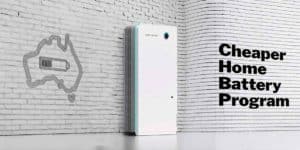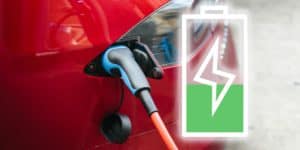Buying Storage

Energy Saving Guide
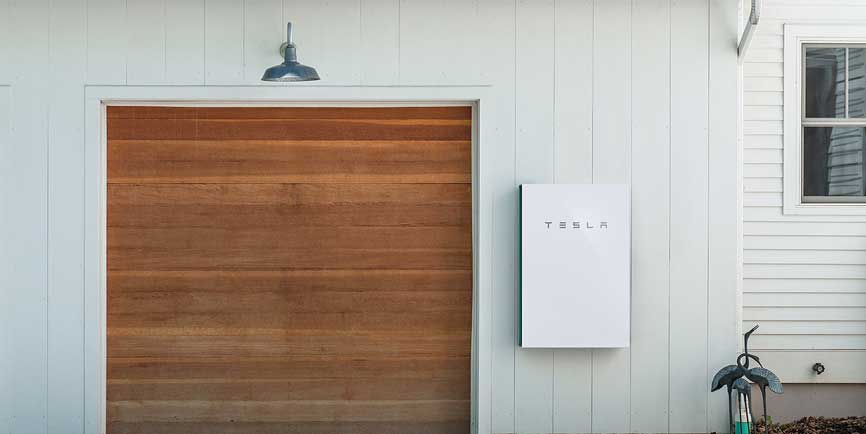
Battery storage buyers guide
Batteries are shaping up to be the next big revolution in household energy saving.
The growing commercial and grid-scale use of batteries is driving improvements in energy storage technology and reducing prices. From July 2025, the long anticipated boom in home storage will arrive as result of the Federal Government’s $2.3B Cheaper Home Battery Program. With Australia’s huge adoption of solar (4m solar properties and counting) and high energy prices, this is set to become the tipping point for up to 500,0000 households and businesses to add storage over the next 5 years.
If you are investigating whether energy storage is right for you, this Buyers guide outlines the technology, costs, payback plus what to look for when buying a battery for your home. See our Battery storage owners guide to find how to get the most from your battery including price arbitrage opportunities, joining VPPs, cycling strategies and more.
Your guide to buying battery storage
When it comes to shopping a battery here’s what you need to know.
1. Why buy a battery?
There’s a bunch of reasons why households choose to add energy storage. A battery enables solar owners to consume even more of the rooftop energy they generate and reduce use of more expensive grid electricity, particularly at peak times and rates. A battery can import off-peak energy from the grid when energy is cheaper as well as from solar and save it for later use.
Energy independence
Households with battery storage have reduced dependence on the grid along with reduced exposure to electricity rates and feed-in tariffs. This includes the impact of price increases over time along with the varying price of electricity at different periods during the day.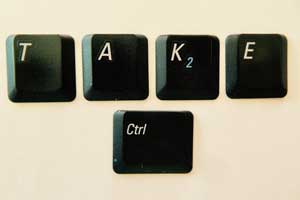
Price arbitrage
Buy low, sell high or avoid high grid rates. Storage provides households with the ability to store cheaper electricity – usually excess solar but also off-peak electricity – for use later in peak times when grid electricity is expensive. Or to sell energy back to the grid for more than it cost to buy in VPPs or market-linked electricity plans.
Help power the grid
You can be paid to have a battery. By being part of a Virtual Power Plant (VPP), owners receive payments from energy retailers for supporting the grid. In return, the retailer will remotely access the energy stored in owners batteries at times when there is a risk of a network outage and/or electricity demand and market prices are high.
Blackout protection
Battery storage can provide backup energy, available 24/7 if there’s ever a blackout. For most people, this is a bonus that comes with installing a battery.

Plan B at my place
We experience blackouts for maybe an hour or two each year when the grid connection goes down. So, we had a double powerpoint installed next to the battery (in the garage) which lets us draw power from the battery in the case of a blackout. We simply plug in an extension cord or two. Then we can run the fridge, microwave and some portable lights. Rewiring the meter box to provide backup power on specific circuits wasn’t a cost we could justify, because it would be rarely used. But this simple and cost-effective solution gives us a Plan B that works at the lowest cost for our circumstances!Off-grid energy
For some households in remote settings, a battery is a necessity, not a luxury. The cost of running a long connection to the grid can mean it’s more expensive to join the network. In this situation, a full off-grid solar battery solution, though far from cheap, can be a viable alternative.
2. Battery storage explained
How energy storage works
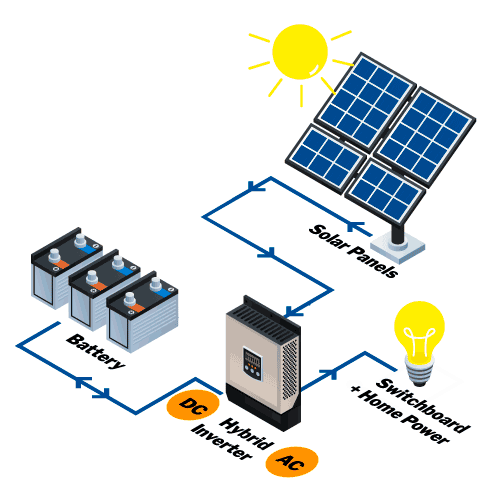
2. The Hybrid Inverter then “converts” the DC energy generated by solar into Alternating Current (AC 240V). This is passed into the Switchboard and meter – and can power the home or go into the grid.
3. The hybrid inverter also passes DC current into the Battery to store for later use. When needed it will take energy from the battery and convert it to AC.
4. The inverter can also draw energy from the grid to store in the battery.
Battery meet Inverter
Solar PV panels generate electricity as DC (Direct Current). Batteries also store energy as DC. Because our homes are powered by 230 volt AC (Alternating current) an inverter is needed to convert DC into AC. The inverter will also convert AC grid energy into DC to fill the battery. A single ‘Hybrid’ inverter can manage this process for a solar battery system.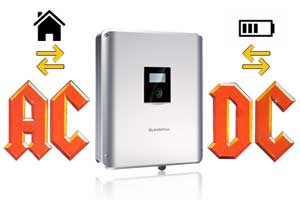
You’ll need an inverter to rock your battery!
Round-trip efficiency
Electricity is lost through the process of putting energy into and out of the battery. So if you feed 5kW of electricity into a battery which has 80% round trip efficiency, then you would only be able to discharge 4kW. Battery systems need to be sized to account for this ‘round trip loss’.
Not all the energy put into a battery will return.
Storage and discharge rate
I know you’ve heard this before, but it’s not all about size! The maximum continuous rate of storage and discharge for a battery is a very important consideration. Getting power into and out of the battery when you need it is critical. Otherwise, you can’t capture all your excess solar or access energy from your battery to power appliances when needed.
Accessing power fast lets you run more appliances.
State of Charge
Running a battery down to 0% State of Charge can shorten a battery’s lifespan. So, lithium batteries are designed with a battery management system that holds some capacity in reserve at the bottom (and often top as well). This helps minimise degradation of the battery. Batteries have a smaller usable capacity than their stated size. Lead acid batteries need to be treated more carefully when it’s comes to discharge. Typically lead acid batteries are only discharged to 50%. The installer will usually configure this set up.Cycling
Charging a battery to full and then discharging the electricity is called a cycle. Batteries have different capabilities to be cycled. For some, it’s once a day. Others are capable of many times a day. If you cycle the battery more or less than recommended and designed for it will impact the payback of the system along with the likely lifespan. Under cycling a battery underuses it’s potential – leading to a longer payback period, but won’t impact the expected lifespan. On the other hand, over cycling a battery will shorten its lifespan!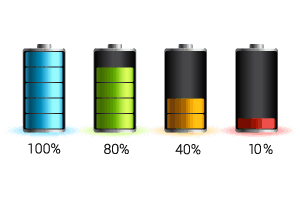
Types of battery technology
Lithium batteries have fast become the leading choice for household storage. Lithium (L-Ion) chemical technology powers laptops, mobile phone and Electric Vehicles. L-Ion batteries can be comprised of dozens, hundreds or even thousands of battery cells. These batteries are linked together and carefully orchestrated by Battery Management System circuitry (BMS) which monitors performance and ensures the batteries don’t overheat, overcharge or discharge.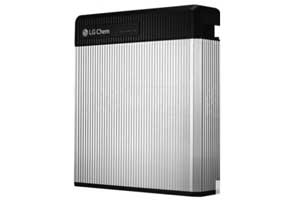
Lithium is the go-to technology for home batteries.
Lead Acid batteries are a cheaper and simpler technology that powered the first wave of off-grid battery storage and backup power for data-centres. Lead Acid technology is used in cars because it’s reliable and stable. However, it is much less efficient than Lithium. That’s because Lead Acid isn’t capable of as low a level of discharge and they have higher resistance compared to lithium batteries. Typically you can output around half of the batteries capacity – to protect the battery from degradation. This means you’ll need a much bigger system to get the same output.
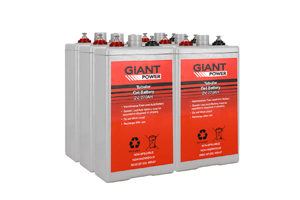
Sodium Nickel Chloride ‘SoNick’ batteries use molten salts as an electrolyte to store energy. ‘SoNick’ technology offers high energy and high power density and is claimed to retain good capacity. Plus these batteries are more environmentally friendly, without toxins. The downsides of SoNick batteries are a shorter lifespan than Lithium and a much bigger price tag.

‘SoNick’: Very safe, very reliable and very expensive.
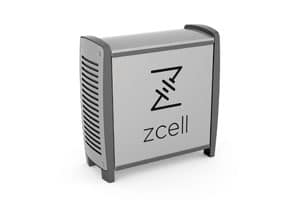
If the price drops, Flow batteries could be huge.
3. What size battery do I need?
To correctly size a battery, you need to consider;
- The energy used in the home each day. It’s important to get your meter data or to monitor energy use over time. This will allow you to properly understand your household’s energy use. What matters most is the energy you import from the grid, because the benefit of battery is removing or significantly reducing the need to buy expensive grid energy. In the case of a household buying 10kWh of electricity in the evening peak and overnight, the battery should be able to store enough energy to cover this period. The battery also needs to be able to discharge enough power to run multiple appliances at once – so look for the peak spike each day to ensure your battery can output enough to cover this.
The significant reductions to the price of storage thanks to Governments Rebates are available only once. So it can be worth considering your future energy needs and plan ahead- whether adding an EV or an uplift in energy use to enhance the comfort level of your home. Adding a bit more “headroom” now, will extend the payback period, but could offer households better long-term value for their investment.
- The excess solar generation. This determines how much cheap solar energy you can fill your battery with every day. Unless the battery is filled and used to capacity, the payback period gets longer. Typically solar households export more than half the energy they generate, and receive a relatively small feed-in tariff in return. It’s also possible If you are adding solar and battery together, then a 3kW PV set up would be the minimum amount to couple with storage. A 5kW solar system is a better starting point. Ultimately, the total system needs to be sized for your household’s unique energy needs.
‘Goldilocks’ and the three batteries
- Just right:
Consider battery systems with an energy storage capacity of 10-14kWh as a starting point for a 3-4 person family. This battery size offers a good compromise in upfront cost and ongoing savings. It also makes sense for the battery to have a higher continuous discharge rate. A discharge rate of at least 5kW will ensure a good level of power is available when needed.
In comparison; - Going too small:
Choosing a smaller 3-4kWh system such as Enphase will have insufficient discharge capacity @ 1.1kW to run even one higher power appliance (kettle, oven or cooktop). Plus it’s likely to run out in the early evening, even before heating or cooling is used. - Going too big:
Adding a lot more storage capacity than you need to cover your current or conceivable future energy needs will extend the payback period. Joining a VPP can provide some extra return If most of the battery capacity is sitting idle everyday and not being used to capacity. Ultimately the decision to go XL might be something to consider if you accept a long(er) horizon with the upside the larger battery will retain capacity. Of course, there are cheaper ways to reduce your energy costs, that you may want to do first.

Measure your energy use to get the battery size right
4. How much does battery storage cost?
Average battery storage costs (May 2025)
From July 1 battery costs will reduce by around 30% due to the Federal Government’s Cheaper Home Battery Program| Battery storage capacity | Battery only | Battery + Inverter/Charger |
|---|---|---|
| 3kWh | $4,050 | $5,100 |
| 8kWh | $8,960 | $10,560 |
| 13kWh | $13,650 | $15,730 |
| 18kWh | $17,460 | $19,980 |
Payback periods
Payback periods on batteries are long. We’re talking typically over ten years. However, for situations with smaller/lower-cost batteries and where the price of peak electricity is higher, then payback periods can be lower.
The ideal situation for a shorter payback is one where peak electricity rates are higher for relatively short periods (so you need less battery storage) and where off-peak electricity is inexpensive. This is the case for those in the Ausgrid electricity network (Sydney, Newcastle) where peak rates are well above 40 cents per kWh and off-peak is below 20 cents per kWh and the peak period is 4-6 hours on weekdays only. Also, South Australia’s high electricity rates help the financial case for adding energy storage to an existing solar PV system.
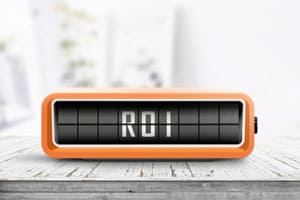
Battery storage has a decade long ROI

Should I buy a battery now or wait?
For a long time – if people asked me about buying battery storage purely for financial reasons the short answer was “No, not yet”. Sure, solar feed-in tariffs have been on the slide since 2020 meaning you’ll want to use more of your solar rather than export it, while grid rates jumped significantly in 2022. The sticking point was the high price of batteries, that resulted in a payback of well over a decade.
From July 2025, the 30% drop per kWh in storage prices due to the Cheaper Batteries Program, means adding a battery is accessible for a lot of households. Plus, when you factor in the increasing number of opportunities to monetise storage including Virtual Power Plants (VPP), Demand Response and tariff optimisation – then payback periods are well under ten years.
When you combine all the benefits of having energy storage – blackout protection, greater independence, using more of your solar or accessing off-peak rates while avoiding peak rates – then buying now can be a logical choice. It certainly was for me in June 2018. And I wouldn’t give up having a battery and the financial and lifestyle benefits it offers.
Shopping around
Batteries are a big outlay with a long payback so you’ll want to take the time to do the research. There are lots of products available in Australia as the world sees our market as a leader. From famous brands (Tesla & Sonnen), innovators (Enphase), emerging powerhouse brands (SigEnergy, BYD) and lesser-known small players. Each has its advantages and disadvantages. By asking the right questions – see the checklist below – you can find the system that best suited for your home. Using a broker, like Solarchoice.net.au, can help connect you to local battery installers to provide you with a range of quotes to consider. If you want to maximise the returns for your battery – it’s worth considering whether the system will be compatible with Virtual Power Plant (VPP) offers provided by energy retailers to battery households offering added rewards. This may also be a requirements of some Government battery rebate schemes.
Compare your battery options to find the best deal.
5. Battery buyers checklist
Here are the questions you’ll want to ask when you get closer to buying.
Ask about your system
What size battery do you recommend? How long will the battery last into the evening before it runs out based on my current use? Will it cover my usage in peak periods? Would the battery be suitable in future if my energy use changed?
How much will it save me on my bills? (Use our handy ‘Add battery’ feature on the WATTever comparison for an independent validation)
What’s the forecast payback period?
Get a written quote with a breakdown on price and the components included.
Ask if it’s possible to expand the set up in the future? Could more storage be easily added?
Can the system be easily user-programmed? Or does the installer need to do this? Is it simple to monitor what the battery is doing?
Is the battery system compatible with retailer VPPs (check here) or automated battery management solutions in order to maximise your return?
Check out the installer
Is the installer accredited? For example, Clean Energy Council (CEC) Approved Retailers are part of an industry scheme. They provide a 5-year whole of system warranty, only work with CEC accredited installers and meet the Solar Retailer industry Code of Conduct
Ask how long they have been operating for. You want to know if they’re going to be around in 2 years in case of a problem.
Is the installer accredited? Clean Energy Council (CEC) accredited installers undertake ongoing professional development and training pus commit to a code of conduct.
Check online reviews of installers and request local references. A good installer will have customers willing to share the experience.
Check out the products
Read online reviews of the recommended battery system and components.
Review the warranty on offer. At least 5 years on inverter and batteries. Performance warranties are very hard to claim on.
Does the battery and inverter makers have local offices? This way you could make a claim direct with the manufacturer should you ever have a problem.
Contract
Review the fine print in the contract. Especially around the warranty and support service.




